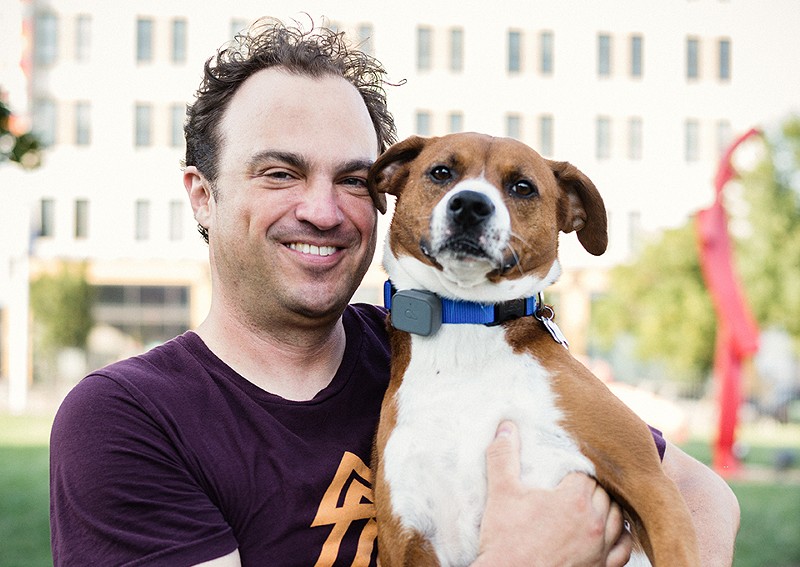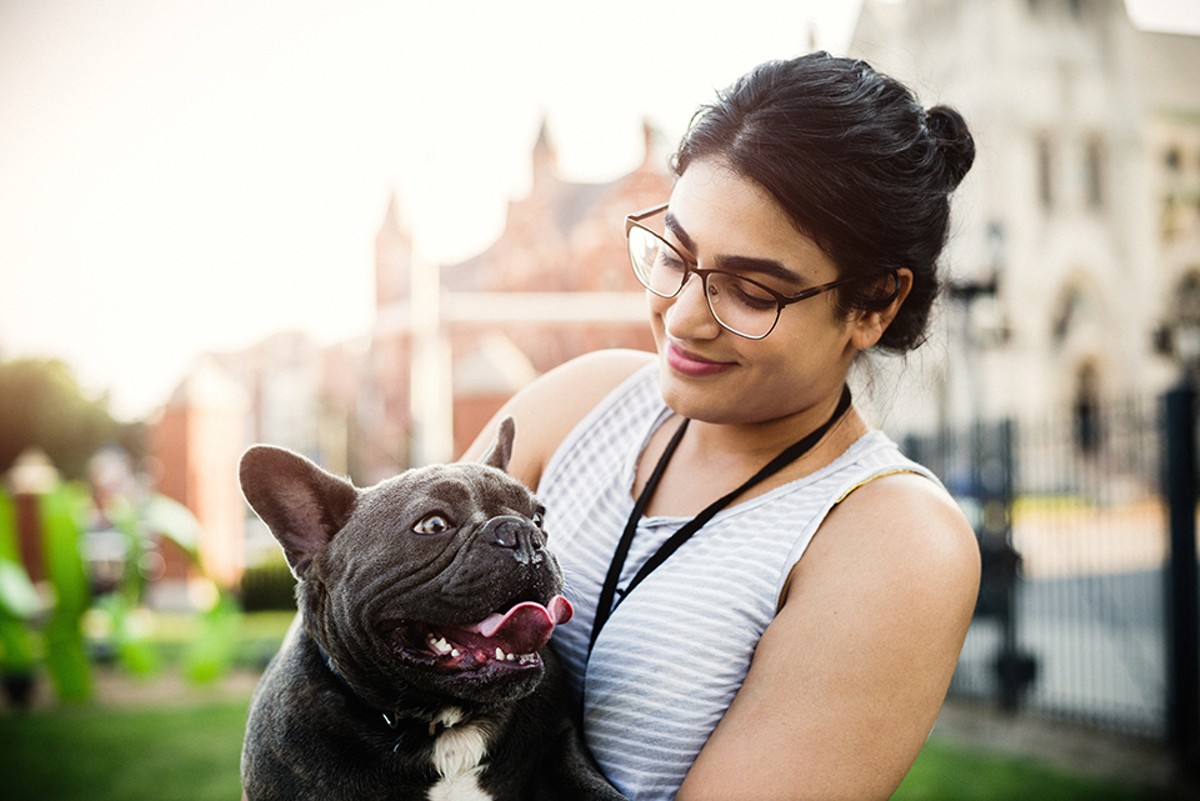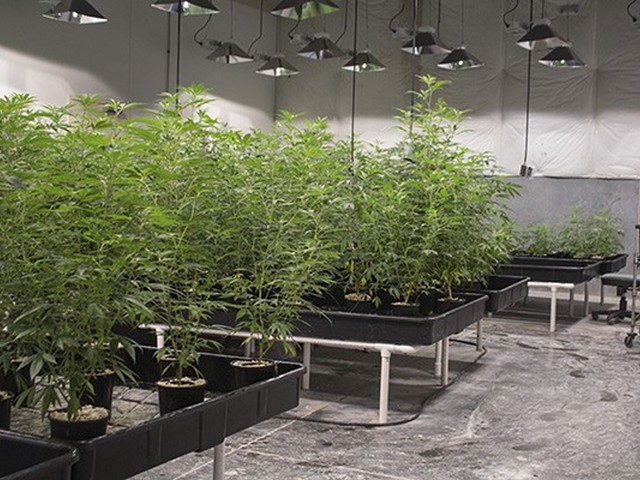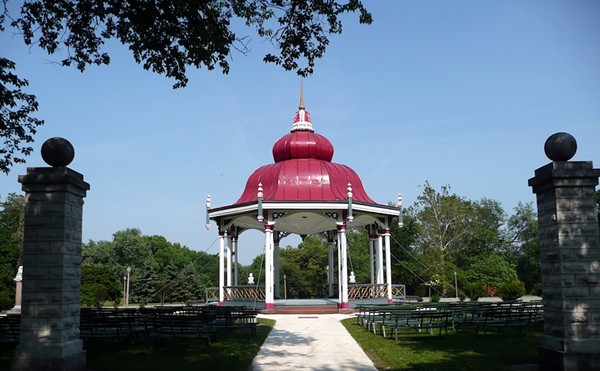
As dogs scamper through the Ellen Clark Sculpture Garden, they're shooting in and around the works of a Marianist priest known as Brother Mel, whose pieces number just more than a dozen in this park, and thousands in total.
Upon his passing at age 85 in October 2013, the St. Louis Post-Dispatch noted that "Brother Melvin Meyer once estimated that he had created more than 10,000 pieces of art during his 45-year career. He made large, colorful abstract metal sculptures; stained glass; watercolors; paintings; and handmade paper. St. Louis residents are familiar with Brother Mel's art. It seems to be everywhere in the region — in Forest Park, in hospitals, office buildings and chapels; throughout the campus of St. Louis University, and in hundreds of homes and backyards here and across the country."
Keeping the park intact as a dual-use facility is the job of the college's custodial and grounds services department, headed by popular SLU employee Jeff Macko. For a while now, SLU's de facto dog park has a been a place that's existed in a funny half-life. Being closed for several days a week and several months a year means offers and opportunity to keep the natural carpet of grass alive and thriving.
"We have a warm-season grass in there," Macko says. "It's primarily Bermuda, and that doesn't do well with heavy traffic when it's dormant and wet in winter months. That's why we shut it down. We've tried overseeding a little bit lately, which helps somewhat, but for us to keep it to the standards of where it fits in with the overall university grounds, we schedule a rest for that space."
Macko says he's unaware of another park of this sort.
"This is a sculpture park that's morphed into a place where people bring their dogs," he says. "I'm not aware of anything else necessarily like this at another university or school. Maybe there are. But yeah, this is a park that started out as a place to put Brother Mel's art, and it's turned into what we have here today."
And what they have today is a place that people want to enjoy, for free. The caveat here is that the park is open from Thursday to Sunday, 24 hours a day. It's shuttered the rest of the week, though determined dog parkers know just where to jump or shimmy through the fence line. It's also closed during the winter, from December 15 to March 15, a situation that causes no amount of consternation among the multi-hued diehards that inhabit this space the rest of the year. Some are more philosophical than others.
"We're really appreciative of what SLU does," Greer, an effervescent sort, offers.
Even if the hours are partial, the effects of this underrated slice of city real estate might be more lasting than the preconceived notion of what a dog park is all about.
Porter, a self-described introvert, is an active voice at the SLU park, meeting and greeting anyone he doesn't know, making introductions between newbies and regulars. Generally, he tries to ensure it stays a welcoming place. If the group that inhabits the park feels pretty good about itself for diversifying their hangout zone, well, they may deserve the praise.
"There's more diversity and more interaction that takes place than any other example I can come up with right now," Porter says. "People here have changed minds, interacted in ways you wouldn't think they would."






